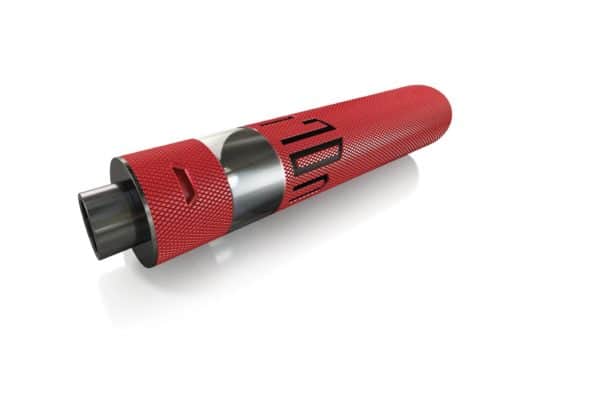
The first commercially produced e-cigarette hit the market back in 2003, and with it, came e-liquid. Created in China by Hon Lik, the e-cigarette and liquids arrived in the US and UK over 2006 and 2007. Fairly rudimentary by design compared to modern day standards, early e-cigarettes had limited flavours and due to their disposable nature, could only be used once. Since then, the design of both e-cigarettes and the e-liquid they contain have changed significantly. With millions of dollars worth of research and development having gone into e-liquid ingredients and different formats of nicotine, there’s been a rapid transformation in just over a decade since they were released.
Single-use, disposable e-cigarettes:
First generation e-cigs, called cig-a-likes, had a fixed amount of nicotine, very little vapour and and what amounted to an unsatisfying hit for those quitting conventional cigarettes. These e-cigarettes were a closed system design, meaning once the liquid ran out, they had to be thrown away and a whole new cig-a-like was needed. As consumer behaviours and preferences changed, the demand for better technology and a better vaping experience affected both the design of e-cigarettes and the liquids they contained.
The next generation:
The second generation of e-cigarettes revolutionised the way e-liquids were produced and used. No longer closed systems, open tanks meant vapers could choose their favourite e-liquid flavour and nicotine strength more easily. Manufacturers started producing e-liquids in a wider variety of flavours and strengths as well as different ratios of the two main ingredients: propylene glycol (PG) and vegetable glycerin (VG). Vaping became more customisable and tailored to transitioning smokers needs. Those looking for a stronger throat hit could purchase liquids with more PG, or, those wanting a milder hit and more vapour could get liquids with more VG.
The invention of pod kits and nicotine salts:
Since then, the last few years have seen rapid development in e-liquids and how they’re used.
With the vast majority of e-cigarette users being ex-smokers or transitioning smokers, manufacturers oriented their technology around making e-liquids as satisfying as possible.
As recently as 2017, pod kits were created with high nicotine content, pre-filled pods. Juul popularised the nicotine salt e-liquid, a modified version of the traditional freebase nicotine. This format was created to provide a stronger and more rapid hit, similar to that of a conventional cigarette. Since then, other starter kits like the Aspire Gusto have been released, also utilising pre-filled flavour pods. While they’re a similar concept to first-gen e-cigs, the changes in e-liquid make them more satisfying, flavourful and cost-effective which has contributed to their success. Juul have dominated the US with a current 74% market share thanks to its high nicotine dose pods.
Other manufacturers have also been working on synthetic forms of nicotine, created completely independently from the tobacco plant. Currently, most nicotine used in e-liquids is still derived from the tobacco leaf. Companies like Next Generation Labs are creating the nicotine compound in a lab to be totally flavourless, odorless and without the use of tobacco. This may be a revolutionary step for e-liquid manufacturers as at present, e-cigarettes are still classified as tobacco products due to the nature of tobacco derived nicotine.
How legislation has affected the industry:
Regulatory bodies have had a hand in affecting how e-liquids can be manufactured and sold. Manufacturers have evolved equally as rapidly as the legislation has in order to keep up and supply e-cigarette users with the options they’re seeking.
In Europe and the UK, the EU created the Tobacco Products Directive (TPD) to regulate how vaping products could be manufactured, who they could be sold to and what they were allowed to contain. The regulations came into full effect in May 2016. E-liquids sold in the EU and UK now have a maximum strength limit of 20mg and e-liquids containing nicotine can now only be sold in maximum 10ml bottles. E-liquids also need to be free of taurine and caffeine.
To accommodate the new laws as well as still providing for e-liquid consumers, manufacturers changed the way they sold liquid. With the invention of nic salts, users could purchase 20mg strength liquids which were the equivalent of a 36mg strength in a freebase format. When it came to large bottles of e-liquid, previously the most cost effective way to purchase, manufacturers invented the shortfill. They were the same size bottle as pre-TPD days with space at the top for a highly concentrated 10ml shot of nicotine to be added. This meant vapers could mix to their own desired strength and weren’t limited to 10ml bottles of nicotine-containing liquid.
In the States, the FDA has been keeping tabs on the e-cigarette and e-liquid industry since 2009. President Obama gave the FDA the ability to control and regulate the tobacco industry, which included e-cigarettes. The significance of this meant new tobacco products were required to meet FDA pre-market standards. While this makes vaping and use of e-liquids safer for the general population, it also means the FDA is capable of banning flavours which they have proposed may come into effect following concerns over teen vaping.
The future of e-liquids:
The FDA are considering an outright ban on all non-tobacco and menthol e-liquid flavours and the UK in the process of leaving the EU, meaning TPD may no longer be applicable or enforced in the same way. The future of how e-liquids will be manufactured and sold is now somewhat uncertain. From hitting the market just over a decade ago to now, the change in how they’re made, who is regulating them and how they’re being used has changed rapidly. Even with these factors taken into consideration, the e-cigarette market is projected to see a 20.8% CAGR by 2025. Manufacturers will need to continue to innovate and adapt quickly to provide for this growing industry.
 Gearfuse Technology, Science, Culture & More
Gearfuse Technology, Science, Culture & More


